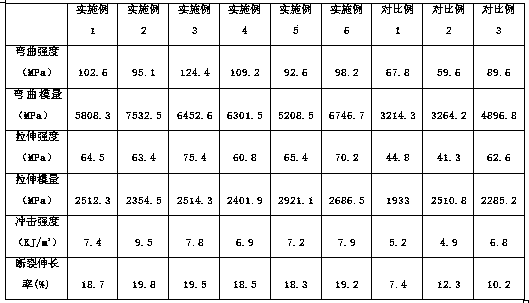Polylactic acid wood plastic composite material used for 3D printing musical instrument and preparation method and application thereof
A composite material and polylactic acid wood technology, which is applied in the field of polylactic acid wood-plastic composite materials and preparation, can solve the problems that the device cannot be polished, painted, and is not suitable for printing musical instruments, and achieves a simple and easy preparation scheme, good mechanical strength and Toughness, a wide range of effects
- Summary
- Abstract
- Description
- Claims
- Application Information
AI Technical Summary
Problems solved by technology
Method used
Image
Examples
Embodiment 1
[0037] A polylactic acid wood-plastic composite material for 3D printing musical instruments is blended by the following components by mass percentage: modified rosewood powder 5 wt%, polylactic acid 86 wt%, toughening agent 5 wt%, nano inorganic Filler 3 wt% %, lubricant 1 wt%;
[0038] Wherein, the nano-inorganic filler may preferably be one or both of nano-silicon dioxide, nano-titanium dioxide, and carbon nanotubes. The lubricant may preferably be zinc stearate.
[0039] The toughening agent is preferably SEBS (styrene-butadiene-styrene block copolymer), SBS (thermoplastic polystyrene-polybutadiene-polystyrene block copolymer), TPU (thermoplastic polyurethane elastomer ), TPEE (thermoplastic polyester elastomer) in one or more mixtures.
[0040] The above-mentioned polylactic acid wood-plastic composite material is prepared by the following method:
[0041] S1. Utilize chemical modifier to prepare wood flour into modified wood flour, the specific steps are as follows: ...
Embodiment 2
[0049] The difference between this example and Example 1 is that the polylactic acid wood-plastic composite material used for 3D printing musical instruments is blended from the following components by mass percentage: 20wt% modified acacia wood powder, 62wt% polylactic acid , toughening agent 10 wt%, nano-inorganic filler 5 wt%, lubricant 3 wt%.
[0050] Above-mentioned step S1 is carried out according to the following method:
[0051] S11. Alkali treatment of wood powder, soak 300 mesh acacia wood powder in 5wt% NaOH aqueous solution (the mass ratio of acacia wood powder and NaOH aqueous solution is 1:15) and stir at room temperature for 24 hours, then wash the spruce wood powder with deionized water until Neutral, after filtering with a filter, place the wood powder in an oven at 90 °C for 12 h to obtain alkali-treated wood powder.
[0052] S12. Put the alkali-treated wood powder obtained in step S11 into a reaction vessel containing 5 wt% to 10 wt% maleic anhydride-absolu...
Embodiment 3
[0056] The difference between this example and Example 1 is that the polylactic acid wood-plastic composite material used for 3D printing musical instruments is blended with the following components by mass percentage: modified maple wood powder 15.5wt%, polylactic acid 70wt% %, toughening agent 8wt%, nano inorganic filler 4.5wt%, lubricant 2wt%.
[0057] Above-mentioned step S1 is carried out according to the following method:
[0058] S11. Alkali treatment of wood powder, soak 300 mesh maple wood powder in 5wt% NaOH aqueous solution (the mass ratio of acacia wood powder and NaOH aqueous solution is 1:15) and stir at room temperature for 24 hours, then wash the spruce wood powder with deionized water to Neutral, after filtering with a filter, place the wood powder in an oven at 90 °C for 12 h to obtain alkali-treated wood powder.
[0059] S12. Put the alkali-treated wood powder obtained in step S11 into a reaction vessel equipped with 10 wt% silane coupling agent-absolute et...
PUM
| Property | Measurement | Unit |
|---|---|---|
| Diameter | aaaaa | aaaaa |
| Particle size | aaaaa | aaaaa |
| Bending strength | aaaaa | aaaaa |
Abstract
Description
Claims
Application Information
 Login to View More
Login to View More - R&D
- Intellectual Property
- Life Sciences
- Materials
- Tech Scout
- Unparalleled Data Quality
- Higher Quality Content
- 60% Fewer Hallucinations
Browse by: Latest US Patents, China's latest patents, Technical Efficacy Thesaurus, Application Domain, Technology Topic, Popular Technical Reports.
© 2025 PatSnap. All rights reserved.Legal|Privacy policy|Modern Slavery Act Transparency Statement|Sitemap|About US| Contact US: help@patsnap.com

